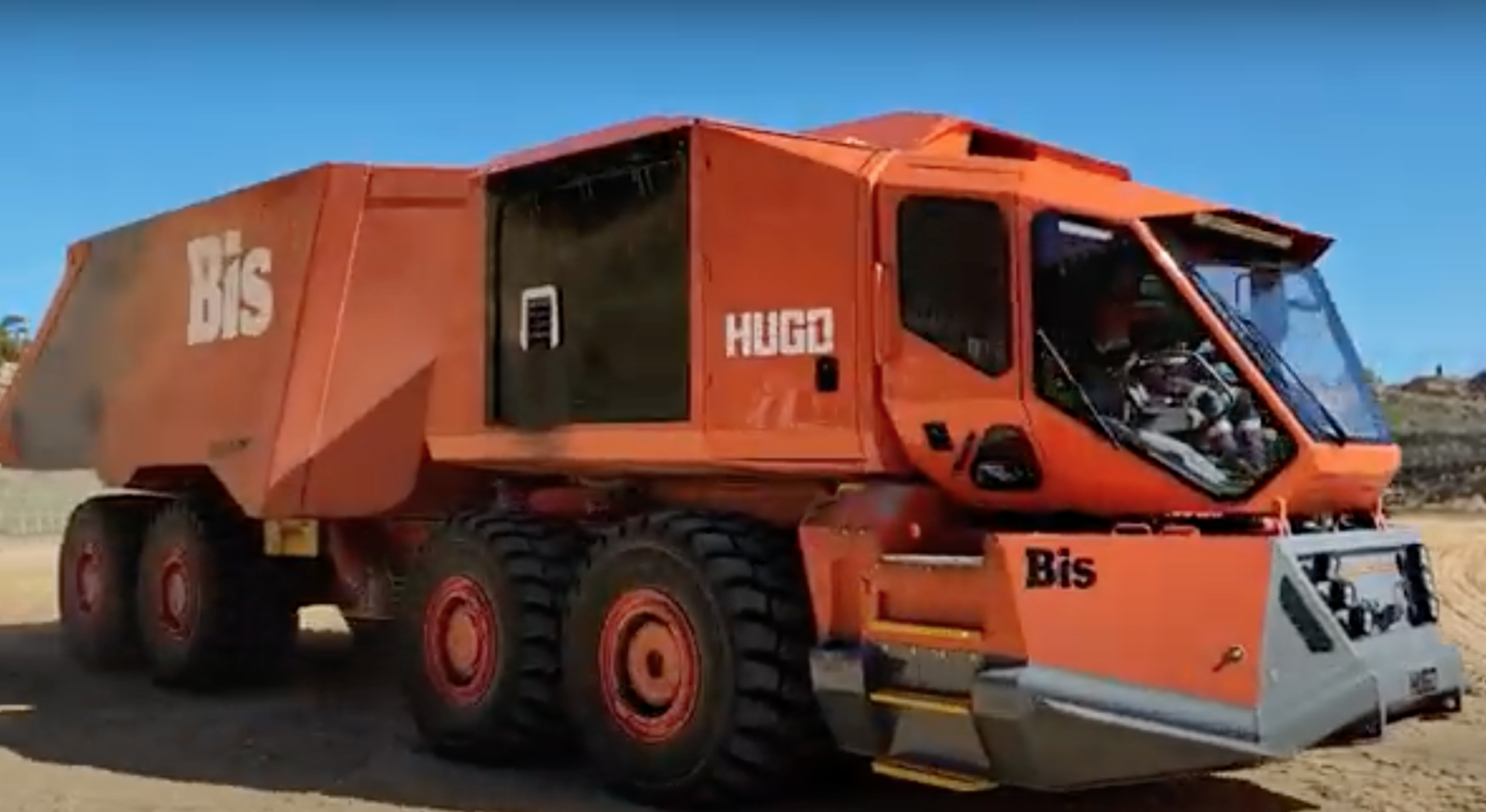HUGO is Australian group Bis Industries’ new hybrid, high payload electric underground hard rock haulage prototype truck which has recently been put through its paces at a quarry during its commissioning phase including extensive durability testing to test the robustness of its electrical system. The 80 t capacity HUGO stands for Hybrid Underground Operations.
It has also undergone shake/vibration testing on rough rutted surfaces (mirroring conditions underground) together with running continuous laps to verify its hydraulic system performance.
Bis says there are two intelligent ways that HUGO reduces mine operator carbon footprint. Firstly more efficient electric haulage: “We know underground mines are only getting deeper and there is a pressing desire to reduce GHG emissions. Unlike existing electric haulage solutions, HUGO is exclusively designed to haul from deep underground in a single run without recharging or battery swapping, because HUGO carries its battery charger with it, if needed.”
It can also use renewable fuels. HUGO’s engine, supplied by Volvo Penta, can use HVO fuels derived from waste materials like residue oils and fats, reducing HUGO’s carbon footprint even further and broadening its range of application.
The design also means users don’t have to change the way they mine, as rather than being all battery powered, it is equipped with an advanced hybrid electric powertrain technology supplied by Danfoss Editron, to significantly improve the customer emissions profile and help them make a conscious step in their net zero target journey.
Bis adds: “Our new hybrid electric underground hard rock haulage truck has had a productive early phase of commissioning which included site mission route testing and thorough brake testing on a variety of grades, speeds and conditions to ensure safe operations. Behind its 80 t capacity is a clever hybrid electric driveline. Energy usage is minimised, along with emissions and thermal heat, all whilst enhancing productivity.”











